How Mariners catcher Cal Raleigh transformed into an MLB star
Published in Baseball
Almost immediately, Justin Turner could sense the bubbling frustration from Cal Raleigh.
A veteran slugger with a World Series ring and an NL Championship Series MVP on his résumé, Turner arrived in Seattle just before the trade deadline in July 2024 and quickly began to form a connection with the Mariners catcher.
They talked next to the batting cage before every game, and Raleigh would pepper his new teammate with questions about his swing, his approach, his process — anything he could think of, really.
“I’m a better (expletive) hitter than this. I need to be better,” Turner remembered Raleigh telling him.
Those initial conversations helped nudge Raleigh on a trajectory that has brought him to the rarefied space he now occupies less than a year later. Raleigh has, simply, become the biggest new sensation in baseball and, suddenly, one of the game’s best hitters, too.
“He really opened my eyes,” Raleigh said. “He’s able to put things in such simple terms, and it really just made sense to me.”
Their conversations continued through the end of the 2024 season, and their friendship grew in the offseason. Raleigh traveled to Cabo San Lucas, Mexico, for Turner’s 40th birthday celebration in November and also stayed with Turner’s family in Southern California, where he met with Turner’s personal hitting coach.
Raleigh is now doing things no catcher has done in the history of the sport. A career .218 hitter with a .740 OPS coming into this season, the switch-hitting slugger has vaulted into the American League MVP conversation with the Yankees’ Aaron Judge while mashing homers at a rate Ken Griffey Jr. never even achieved in Seattle.
“I knew right away Cal was a special guy,” Turner said. “Two things: his desire to be great, and then he's one of the toughest guys I've ever been around. Just seeing him play every day and play through some of the stuff he played with — you don't see that all the time.”
Baseball’s fascination with “Big Dumper” will reach a new apex with Raleigh scheduled to participate in his first MLB Home Run Derby on Monday, with his dad pitching to him and younger brother catching. On Tuesday, Raleigh will be the first Mariners catcher to start an MLB All-Star Game.
“The first sign of a great baseball player is a curious baseball player — someone who doesn't think they have it figured out, someone who wants to continue to grow, wants to continue to be better every single day, no matter how much success they're having — and that's him,” Turner said. “He's curious. He asks questions. He asks questions all the time, which is phenomenal. You just don’t see that from a lot of superstars.”
———
If you were to start from scratch and design the archetype for the modern baseball swing — if you were to ask an AI machine to cull optimized launch, lift and pull data and spit out the ideal mold — the result would be something close to Raleigh’s swing right now.
Consider: No major league hitter over the past 16 seasons has hit the ball in the air as much as Raleigh is this year.
Consider: No major league hitter over the past five seasons has pulled the ball as much as Raleigh is this year.
The results: a major league-leading 38 homers and an OPS north of 1.000 (and, yes, a new $105 million contract signed in March that already looks like a steal for the Mariners).
Here’s the catch: Raleigh doesn’t think of himself as a modern hitter. He doesn’t step to the plate trying to launch the ball through the clouds and pull it off the foul pole.
Ask him and he’ll tell you he’s trying to hit a hard line drive at the center fielder’s head, as Edgar Martinez preaches.
It’s the combination of those competing ideologies — the optimal launch angle lift blended with an up-the-middle mindset — that has triggered Raleigh’s breakthrough.
He has found the sweet spot somewhere between the old and the new.
To find it, Raleigh sought out various ideas in the offseason.
A decade ago, Turner became the face of the launch angle revolution when he remade his swing in his late 20s and then resurrected his career with the Los Angeles Dodgers.
Raleigh wanted to learn from Turner and Doug Latta, Turner’s longtime hitting coach. More than any mechanical swing adjustment, though, Raleigh said his biggest takeaways from those sessions centered more on the mental approach to the game.
“He wants to hear new ideas and he wants to learn, but he’s able to filter things out that maybe aren’t right for him,” Turner said.
Turner signed a one-year deal with the Chicago Cubs in the offseason, after turning down what sources have said was a bigger offer from the Mariners. (In spring training, Turner was openly critical of Mariners ownership’s lack of spending.)
When the Mariners played the Cubs in Chicago last month, Raleigh and Turner met for dinner, and Raleigh will still occasionally send Turner clips of his swing to seek out feedback.
“He’s a really smart baseball player, and he gets it, Turner said. "And I can't emphasize enough that his superpower is that he's curious and he wants to continue to get better. He's not satisfied.”
Raleigh, it seems, has also found the perfect bat to match his swing. Most of his Mariners teammates hated the feel of the new "torpedo bat when they first experimented with it early this season, but Raleigh fell in love with it right away.
Rawlings, the bat manufacturer, has made two custom models for Raleigh — a balanced bat that he uses swinging left-handed, and a top-heavy one for his right-handed swing — and it just feels right. He doesn’t have a deeper explanation than that.
“I wish I had a better answer for you,” he said. “I just picked it up one day and I hit a home run — and I just kept using it.”
———
Edgar Martinez put together a Hall of Fame career in Seattle, spending much of it hitting behind another Hall of Fame legend in Griffey.
And even Martinez marvels at some of the things he’s seen from Raleigh.
“Sometimes it feels like I'm watching Nintendo,” Martinez, the Mariners’ senior director of hitting strategy, said recently.
Martinez, Kevin Seitzer and Bobby Magallanes form the Mariners’ trio of new hitting coaches, and Raleigh was one of the first players Magallanes met with in Arizona after joining Seattle’s staff.
Right away, Magallanes noticed Raleigh’s tendency to “drift” out on his front leg during his swing.
“He just couldn't hold the energy on his backside,” Magallanes said.
To correct that, one day during spring training Martinez suggested a new (and peculiar) tee drill for Raleigh in the batting cage. Martinez pulled the tee up as high as possible, then instructed Raleigh to hit the ball straight up into the netting.
This helped Raleigh move more vertically through his swing — and less horizontally — forcing him to stay strong in his back leg longer.
“We did something drastic with him, and sometimes you have to do something drastic to get a feel of something,” Magallanes said.
Raleigh has been doing that high-tee drill just about every day throughout the season.
“His mechanics are really good right now,” Martinez added. “He’s staying behind the ball, and when you stay behind the ball, actually, you can hit the ball out front without trying to pull it. And that's what it is. It's not going forward. It's actually (staying) behind the ball. And when you hit the ball in front, you’re going to pull it.”
Beyond the swing mechanics, Martinez said Raleigh’s plan — his approach — through at-bats has been markedly better, too.
“It seems like now he feels comfortable trusting what he needs to look for,” Martinez said.
———
Buddies back home in New York have been buzzing Mariners pitcher George Kirby lately.
Folks from his native Ohio have been hitting up Luke Raley with similar questions.
What’s it like, they’ll ask in some fashion, having a front-row seat to watch Cal Raleigh every night?
Kirby, as if firing a fastball, is quick to deliver an on-the-dot answer: “It’s (expletive) awesome, dude.”
Raley, the Mariners outfielder/first baseman, offers a thoughtful perspective.
“When he walks up to the plate, you're almost expecting him to hit a home run — and that’s not how baseball's supposed to be,” Raley said.
After arriving in Seattle early in 2024 via trade, Raley grew close with Raleigh, a connection centered on their old-school sentiment for how to play the game. Raley and Raleigh spent time together this winter working out in Arizona, and Raley could see the building confidence his friend had in his refined swing.
But this?
“It's just incredible what the guy’s been doing, and it's almost extra exciting happening to Cal, because of what a great person he is, what a great teammate and leader,” Raley said. “He deserves everything that's coming his way.”
———
Scott Hunter can admit this now, seven years later: He was not sold on selecting Raleigh with the Mariners’ third-round pick in 2018.
“I was a little nervous,” Hunter said.
Now the club’s VP of amateur scouting, Hunter will oversee his ninth MLB draft for the Mariners starting Sunday, when Seattle holds the No. 3 overall selection.
Whatever the Mariners end up doing in this draft, it will be difficult for Hunter to ever top what he pulled off with the 2018 class, which featured future All-Stars in Logan Gilbert (first round) and Raleigh (third round).
Industrywide, scouts were split on Raleigh’s pro potential, and MLB.com didn’t even include him among the top-10 catching prospects going into the 2018 draft. Hunter had played in the minor leagues and was roommates with Cal’s uncle, Matt, but he still needed convincing to select the switch-hitting catcher from Florida State.
Inside the Mariners draft room, Hunter first got assurances from Rob Mummau, the Mariners’ Southeast area scout, and Frankie Piliere (now the Miami Marlins’ director of amateur scouting).
As the debate picked up steam, Jesse Kapellusch, one of the club’s senior crosscheckers, walked across the room to make a pitch to Hunter about Raleigh, whom Kapellusch had given a “50” grade on the standard 20-to-80 scouting scale (50 representing an average major-leaguer).
That was enough for Hunter, who pulled the trigger and selected Raleigh at No. 90.
“If I sat here and told you we knew he’d be this good, that’d be a lie,” Hunter said in a recent interview. “We thought he might be a really good backup with a chance to be an everyday guy.”
Turns out, the Mariners then had to convince Raleigh to sign his first pro contract.
Leading up to the draft, Hunter had heard rumors that Raleigh’s representatives at the time from Scott Boras Corp. had already worked out an above-slot bonus with the Atlanta Braves — the MLB team closest to Raleigh’s family in North Carolina — to select Raleigh early in the fourth round. Raleigh’s camp was caught off guard when the Mariners swooped in late in the third round.
There were robust back-and-forth negotiations over the next several weeks. At one point, as Hunter remembered it, there was a miscommunication between Boras and a Mariners rep who no longer works with the club (whom Hunter declined to name). Things were bleak enough that Hunter went to bed the night before the signing deadline believing any chance of a deal with Raleigh’s camp was dead.
The next morning, Hunter got a call from Tom Allison, then the Mariners’ top scouting executive: Raleigh is still in play, Allison told him. Hunter caught an early flight from his home in New Jersey to Arizona to meet with Raleigh and his agent, Brett Knief.
Raleigh ordered two steaks that evening — on the Mariners’ dime — at the Arrowhead Grill, not far from the Mariners’ complex in Arizona, as Hunter mapped out a plan for him in Seattle’s system.
Hunter barely slept for two days, he said, but he ultimately got Raleigh to sign just 10 minutes before the deadline.
“I was just honest with him. I said, ‘There’s an open road for you (to Seattle) and this is what I can do for you,’” Hunter said.
Hunter and Raleigh have been close since, so much so that the Mariners catcher will text Hunter fairly regularly with questions about his draft prep.
“So who we taking?” Raleigh will ask.
———
These days, Raleigh is everywhere. The Mariners PR department has been flooded with interview requests from national media outlets over the past month, and the club made a big marketing push on his behalf during voting for the All-Star Game.
From his home in South Dakota, Michael Sadler has watched with keen interest as Raleigh transformed from 50-grade pseudo prospect to bona fide big league star.
“He’s the most selfless person I know,” Sadler said. “He’s the first person to give credit to the person next to him. He doesn't want the fame. He doesn't want the glory. He just wants to be the best player that he can be, and then all that other stuff will take care of itself.”
Sadler spent six years as a Mariners’ minor league strength and conditioning coach, and he and Raleigh grew close during 2019 season together at the Mariners’ Single-A affiliate in Modesto, Calif.
For a 7 p.m. game, players would typically arrive at the ballpark around 2 p.m., Sadler said. Most days, though, Raleigh would arrive at 11 a.m. so he could get a full workout in with Sadler in Modesto’s cramped weight room.
“It was like a closet weight room. Only about four people could fit in there,” Sadler remembered.
Those early days in the minors set a foundation for some of the pre- and postgame routines Raleigh puts his body through to play every day.
“You could just tell he was different from the get-go,” said Sadler, now the director of sports performance at Dakota Wesleyan University. “You could tell his determination and his grit and his willingness to do just about whatever it took to be the best, and he's putting it on display right now.”
Sadler named his first son, Kal, after Raleigh, who agreed to be the boy’s godfather. Raleigh traveled to South Dakota in January for the christening.
“He’s living his dream,” Sadler said. “I’m just really proud of him and the person that he’s become, and I really think it’s only going to get better from here.”
© 2025 The Seattle Times. Visit www.seattletimes.com. Distributed by Tribune Content Agency, LLC.
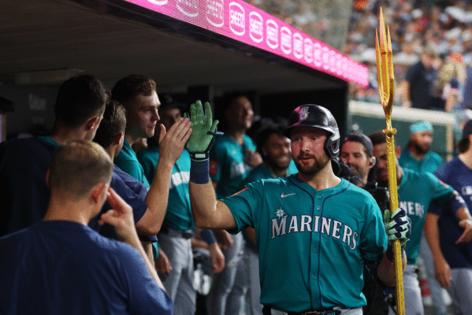
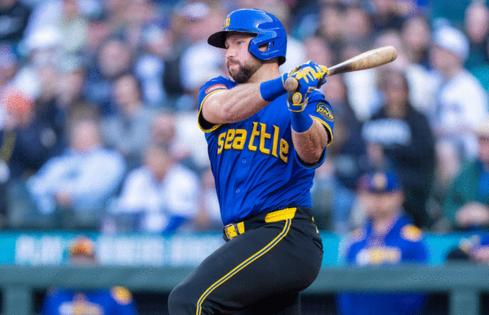


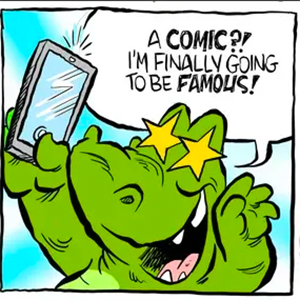
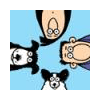
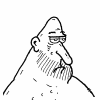
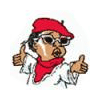
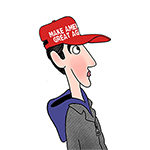
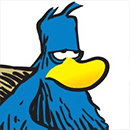
Comments